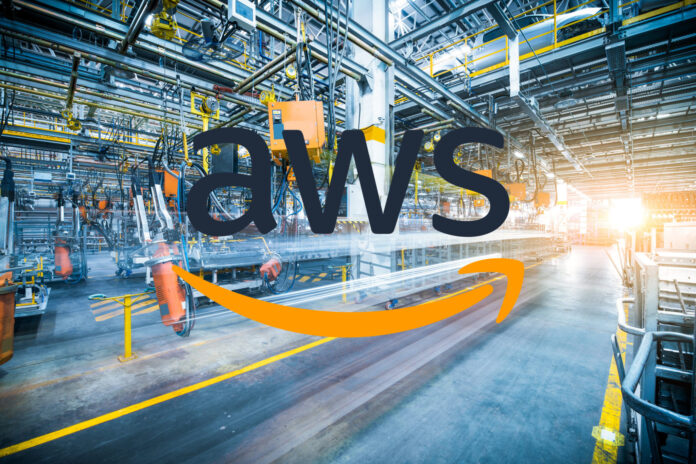Short of detail, high on intrigue; the news from AWS this week that it will launch its own private 5G offer, pulling together telco parts from anonymous partners as a new-age plug-and-play enterprise networking system, has caused great excitement within the telecoms market. But it has also raised questions. What is it up to? Who stands to win? Who stands to lose? Here, leading analysts react to the news, and draw-out the key points; among them, they variously suggest the biggest threat from AWS is for system integrators, rather than telcos, and that mission-critical private 5G is out of AWS’s reach.
“The most significant new player in the private 5G market” – Appledore Research
“AWS has just set down a benchmark for ease of use. We need to see now whether it trumps other considerations, and for what proportion of the market. It adds the most significant new player into the private networks market [and] will certainly force other providers to recalibrate, if not rethink, their value propositions. It should help accelerate growth of the market as a whole
 “For mobile operators, AWS is stressing a partnership approach. But it will be AWS in customers’ minds and on their bills. Which will be hard for telcos to accept. And telcos may get pushed back into more complex and niche customer requirements. But the focus for AWS is compute, storage, networking. It is not an applications company, and so the launch still offers headroom for CSPs – and for anyone – to create solutions that meet specific business needs.
“For mobile operators, AWS is stressing a partnership approach. But it will be AWS in customers’ minds and on their bills. Which will be hard for telcos to accept. And telcos may get pushed back into more complex and niche customer requirements. But the focus for AWS is compute, storage, networking. It is not an applications company, and so the launch still offers headroom for CSPs – and for anyone – to create solutions that meet specific business needs.
“The launch demonstrates one of the key consequences and strengths of open, disaggregated, virtualized RAN – the ability to run at a small scale, and scale-up as necessary. Which is not a given for standards that have been created for macro networks. NEPs are already repositioning to address the enterprise, but it seems like the AWS baseline is to displace existing Wi-Fi – which sets the bar lower, perhaps, than NEPs were thinking.
“One concern with open RAN is about who integrates it. Who assures open RAN end-to-end? Within the context of private networks, AWS seems to be taking that on – at least for some portion of the enterprise market. The question is whether that will turn out to be good enough for enterprises in the long run.
“Broadly, this launch reinforces the direction of travel in the industry – of telecom as-a-platform, as an enabler (enabled through software), where the real value is in how to leverage the combination of connectivity and data to improve quality, speed, and experience. Assuming there is a revenue share model for technology partners, it is a more direct commercial proposition than from Google Cloud or Microsoft Azure.
“It will be interesting to see how Microsoft responds. It has huge ‘mindshare’ in enterprise IT, but AWS seems to have taken one step beyond in aiming to provide a total solution. There are a lot of questions, and some limitations, but this does look like a significant catalyst within the private 5G market.”
– Robert Curran, consulting analyst, and Francis Haysom, principal analyst, at Appledore Research
“Operators should have understood by now they’re not the only ones” – Omdia
 “It has significant implications for the wider private networks market. It reiterates that hyperscalers are companies to watch out for in this market, as they understand that private networks are not about connectivity per se but the digitization enabled by it. While there is not a lot of information on partners, I expect this announcement to boost niche or specialist vendors such as Athonet – which are likely going to be involved in this.
“It has significant implications for the wider private networks market. It reiterates that hyperscalers are companies to watch out for in this market, as they understand that private networks are not about connectivity per se but the digitization enabled by it. While there is not a lot of information on partners, I expect this announcement to boost niche or specialist vendors such as Athonet – which are likely going to be involved in this.
“The emphasis on taking out complexity and cost, also underlines how both elements are still significant challenges in this market. I would expect this to better target and gain more traction in the SME segment, rather than in more complex deployments with mission critical requirements. Mobile operators should have understood by now that they are not the only ones, nor necessarily the best-placed ones, to drive private networks.
“They should rethink what they can bring to this market that hyperscalers and SIs cannot. If they are serious about private networks they should accelerate their investments and expand their private networks teams.”
– Pablo Tomasi, principal analyst for private networks, Omdia
“A bigger risk to systems integrators than to telcos” – Disruptive Analysis
“AWS will try to use operators as a ‘channel’, the same way they use them to sell Wavelength. [Its pitch to operators is that] productised private networks are easier [to sell] than slices of public networks, and appeal more to enterprises who want the cloud-integration. Not sure how well that fits for complex/critical users, though – how well the cookie-cutter model will work for critical/ and regulated use cases.
 “The focus is on ease-of use, deployment, and operation – “from the AWS Console”. In other words, connectivity is ‘just another’ cloud app. That same focus on simplicity covers both the tech and the pricing (which hasn’t been published), which is essentially driven by coverage and throughput. It talks about thousands of devices – lots of cameras, vehicles, identical sensors – which breaks with most private networks, as they are today, for tens or hundreds.”
“The focus is on ease-of use, deployment, and operation – “from the AWS Console”. In other words, connectivity is ‘just another’ cloud app. That same focus on simplicity covers both the tech and the pricing (which hasn’t been published), which is essentially driven by coverage and throughput. It talks about thousands of devices – lots of cameras, vehicles, identical sensors – which breaks with most private networks, as they are today, for tens or hundreds.”
“The pay-as-you go/grow model is a major shift. The key phrase is ‘easy-to-understand pricing’, with ‘predictable monthly spend’ and ‘zero upfront charges’ for all the 5G gubbins. But there remain lots of questions about [radio] planning and design, and so on. I am surprised by the lack of detail on this; it is unclear how and where planning is to be done, especially for complex environments.
“The customer quotes in the release are interesting. It cites Amazon’s own fulfilment centre warehouses as a customer for outdoor private cellular for vehicles; it quotes Koch Industries (which owns many industrial businesses, and also has a stake in Mavenir); and it positions Dish Network (for which it does cloud networking) as a reseller. “[AWS] is a key strategic partner in helping us deliver private enterprise networks to our customers,” it says.
“The geographic rollout plans are unclear, but I guess it will go wherever there is suitable spectrum – the UK, Germany, Japan, for example. The initial focus on CBRS in the US means it will likely start with 4G / LTE, with 5G coming later. Given it’s using CBRS initially, I expect this is using integrated small cells initially, but with a roadmap to OpenRAN options in future. The use of the term “small cell RU’ is nicely vague.
“The underlying vendors are unclear, but AWS is already used by the likes of Athonet, Celona, Druid Software, Mavenir, and Nokia; it has various RAN / small cell partnerships as well, notably with JMA. In terms of go-to-market, it poses a bigger risk to systems integrators than to telcos, carving out a lot of value by pre-integrating and white-labelling stuff, and reducing the scope for professional services with automation.”
Subscribe now to get the daily newsletter from RCR Wireless News
– Dean Bubley, founder, Disruptive Analysis
“I would not lose too much sleep if I were an operator” – Dell’Oro Group
“My first impression is that it is positive for the private market, especially in the US where there is dedicated private spectrum to work with. While activity is on the rise with thousands of projects now globally, the reality is private 5G has not crossed the chasm and still accounts for less than one percent of the overall 5G RAN market. It is one thing to say on paper that private 5G is as easy to deploy as Wi-Fi but most enterprises know this is not the case.
 “So any solutions that can address some of the pain points preventing more widespread adoption of private 5G is generally good for the broader private market. Clearly, the new AWS package will not address all of the speed bumps. But it can play a role when it comes to boosting awareness, reducing complexities with dimensioning, installing, and managing the network, and improving the overall value proposition with private 5G.
“So any solutions that can address some of the pain points preventing more widespread adoption of private 5G is generally good for the broader private market. Clearly, the new AWS package will not address all of the speed bumps. But it can play a role when it comes to boosting awareness, reducing complexities with dimensioning, installing, and managing the network, and improving the overall value proposition with private 5G.
“At the same time, this is not the first time we have heard about game-changing cellular solutions, or plug-an-play services with easy pricing that can be implemented with a few clicks, in days instead of months. So some scepticism is warranted. One difference of course between this and other 5G as-a-service offerings is the fact AWS has a healthy balance sheet and strong installed base of enterprise cloud customers.
“I would not lose too much sleep if I were an operator. If anything, it is a good thing if AWS can help to improve awareness about private 5G. This does not change the fact that private 5G deployments without operator involvement will be the exception rather than the norm – operators still own the lion’s share of the spectrum and they have the expertise needed to support hybrid networks.
“In short, I would characterize this as an interesting announcement with potential. But I don’t have enough data yet to conclude it will change the trajectory of the private 5G market.”
– Stefan Pongratz, vice president, Dell’Oro Group.
“The strongest proposition so far, but is it strong enough?” – ABI Research
“The entrance of a large player like AWS will always have important implications. It will drive attention and provide a boost to the market. This move also changes market conditions in two ways. Firstly, it signals the full entrance of ‘consumption economics’ into the private 5G domain. Even though mobile operators and network vendors are using op-ex based models for private 5G, their main cost determinants have remained the number of connected devices.
 “For enterprises with tight budgets, such fixed costs still serve as a barrier. As the AWS offering is determined only by the coverage and bandwidth, it removes this. The second thing is hyperscalers are now getting involved in selling 5G infrastructure as well. While Microsoft has done so with the acquisition of Affirmed Networks and Metaswitch, AWS is looking to attract partners to its marketplace – by offering market exposure.
“For enterprises with tight budgets, such fixed costs still serve as a barrier. As the AWS offering is determined only by the coverage and bandwidth, it removes this. The second thing is hyperscalers are now getting involved in selling 5G infrastructure as well. While Microsoft has done so with the acquisition of Affirmed Networks and Metaswitch, AWS is looking to attract partners to its marketplace – by offering market exposure.
“Hyperscalers are adopting a system integrator (SI) position. While the rest of the industry (mostly vendors and operators) has been racing to set up as one-stop shops for enterprise 5G, the hyperscalers have already passed the finish line. They have won this race, for now. And even though AWS has been careful to position its private 5G solution as a complement, and not as competition, it should serve as a wake-up call for them all – for SIs, as well.
“They need solid hyperscaler strategies – through co-creation initiatives, and by focusing on their respective strengths. For telcos, licensed spectrum might appear like a good answer to that, but the power of licensed spectrum is being eked away by spectrum liberalization initiatives across the globe. At the same time, public 5G infrastructure will be an important asset, as a range of enterprises will require connectivity beyond their premises.
“And while new entrants look to cover this by partnering with satellite companies (Rakuten, for example, working with Ligado Networks), they have not generated noticeable traction, as satellite costs are higher than for terrestrial infrastructure. So operators retain important enterprise-grade networking assets; it is on them to bring these assets to the table and form strategic partnerships with hyperscalers.
“It is interesting to see AWS rely on open RAN for private 5G. Open RAN remains technically immature, with issues around support for high densities of connected devices, for example. I am undecided whether or not open RAN will be a viable alternative for enterprise-grade cellular. But, sure, this announcement will drive even more attention for open RAN, and help rival vendors build their offerings as serious competition for incumbent network vendors.
“But, while the excitement around this announcement is understandable, there are some aspects that might limit its dream-land impact. Firstly, a consumption-based model might not go far enough. The power of 5G lies in the applications it enables rather than in the tech itself; consequently, an application-as-a-service model is likely to resonate better. AWS has loads of enterprise-grade micro-services, but their customization would be hard.
“Industrial specialists like Siemens already provide OT-ready apps – via its Industrial Edge Marketplace, which could be extended to industrial 5G as well. The second thing is AWS is only offering support for on-prem 5G deployments at this time, with no interaction or resource sharing with the public network. It will, therefore, be interesting only for a subset of private network implementers that do not require off-site connectivity. So while AWS has certainly offered the strongest value proposition for private 5G so far, it remains to be seen whether it is strong enough.”
– Leo Gergs, senior research analyst, ABI Research
Enterprise IoT Insights and RCR Wireless are holding a free webinar on Thursday December 9 with Google Cloud on: The Role of Hyperscalers in 5G and Edge. The session – at 8am PT / 11am ET / 4pm GMT / 5PM CET – also features panellists from AT&T and Telecom Argentina. To attend, sign up here, or click on the image below.


